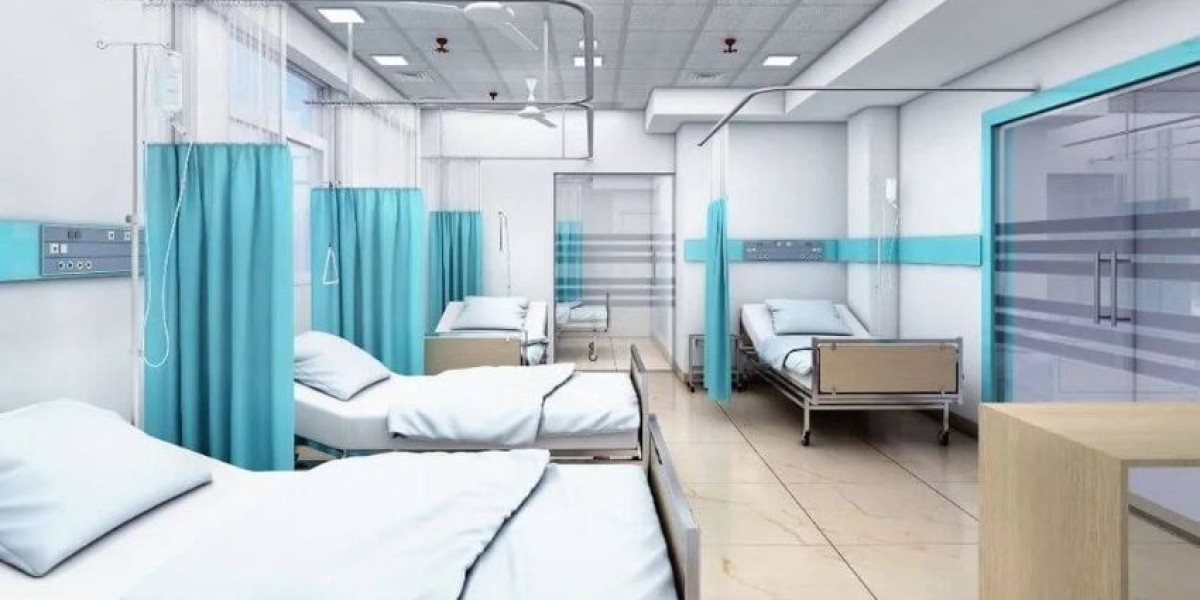Creating a welcoming and comfortable environment in healthcare facilities is essential to promote healing and enhance the overall patient experience. Healthcare interiors play a significant role in creating a calming and reassuring atmosphere for patients, visitors, and staff members. In this article, we will explore 12 healthcare interiors ideas that can transform medical spaces into serene and aesthetically pleasing environments.
Table of Contents
- Introduction
- Importance of Healthcare Interiors
- Natural Lighting and Biophilic Design
- Calming Color Palettes
- Comfortable Waiting Areas
- Patient-Focused Examination Rooms
- Privacy and Acoustic Control
- Healing Artwork and Nature-Inspired Décor
- Functional and Ergonomic Furniture
- Technology Integration
- Sustainable and Eco-Friendly Design
- Child-Friendly Spaces
- Conclusion
- FAQs
Introduction
Healthcare interiors have a significant impact on the well-being of patients and the overall perception of a medical facility. By incorporating thoughtful design elements, healthcare providers can create spaces that promote healing, reduce anxiety, and enhance the overall experience for patients, visitors, and staff members.
Importance of Healthcare Interiors
Healthcare interiors go beyond aesthetics. They are crucial in establishing a positive and supportive environment that can contribute to better patient outcomes. Well-designed healthcare spaces can reduce stress and anxiety, improve patient satisfaction, and create a more efficient and comfortable work environment for medical professionals.
Natural Lighting and Biophilic Design
Natural lighting has proven benefits in healthcare settings. Incorporating large windows and skylights allows ample natural light to flood the space, creating a sense of openness and connection to the outdoors. Additionally, biophilic design, which integrates elements of nature into the interior, such as living walls or indoor plants, can have a calming effect on patients and improve their overall well-being.
Calming Color Palettes
Choosing the right color palette is important in healthcare interiors. Soft and soothing colors, such as blues and greens, can create a sense of tranquility and promote relaxation. Avoiding harsh or overly stimulating colors is important to maintain a peaceful atmosphere.
Comfortable Waiting Areas
Waiting areas are often the first point of contact for patients and visitors. It is essential to create comfortable and inviting spaces that alleviate anxiety. Comfortable seating, ample natural light, and access to amenities like water and reading materials contribute to a positive waiting room experience.
Patient-Focused Examination Rooms
Examination rooms should be designed with the patient's comfort and privacy in mind. Providing ample space, comfortable seating for family members, and soundproofing to ensure confidentiality are key considerations. Incorporating adjustable lighting and temperature controls allows patients to personalize their environment, promoting a sense of control.
Privacy and Acoustic Control
Maintaining privacy and controlling noise levels are critical in healthcare interiors. Soundproofing measures can be implemented to reduce noise transmission between rooms and corridors. Ensuring privacy through proper room layout, sound masking systems, and adequate sound insulation enhances patient confidentiality and comfort.
Healing Artwork and Nature-Inspired Décor
Artwork and décor inspired by nature can have a positive impact on patients' well-being. Choosing artwork that depicts natural landscapes or incorporating nature-inspired elements into the design can evoke feelings of calmness and tranquility. This can contribute to stress reduction and provide a pleasant distraction for patients.
Functional and Ergonomic Furniture
Selecting functional and ergonomic furniture is essential for both patients and healthcare providers. Comfortable seating for patients, adjustable examination tables, and ergonomic workstations for medical professionals promote comfort and productivity. Furniture with antimicrobial properties also contributes to maintaining a clean and hygienic environment.
Technology Integration
Integrating technology into healthcare interiors can improve efficiency and patient experience. Interactive displays for educational purposes, electronic health record systems, and patient entertainment systems can enhance communication and provide valuable information to patients.
Sustainable and Eco-Friendly Design
Implementing sustainable and eco-friendly design principles in healthcare interiors benefits both the environment and occupants. Using energy-efficient lighting, eco-friendly materials, and incorporating recycling and waste management systems demonstrates a commitment to sustainability and promotes a healthier environment.
Child-Friendly Spaces
Creating child-friendly spaces within healthcare facilities helps alleviate anxiety and create a more positive experience for pediatric patients. Incorporating playful and colorful design elements, age-appropriate furniture, and interactive artwork can distract and engage children during their time in the medical facility.
Conclusion
Well-designed healthcare fit out have a profound impact on patients, visitors, and staff members. By incorporating elements such as natural lighting, calming color palettes, comfortable waiting areas, and patient-focused examination rooms, healthcare facilities can create environments that promote healing, reduce stress, and enhance overall well-being.
FAQs
Q1: How can natural lighting benefit healthcare interiors? A: Natural lighting creates a sense of openness and connection to the outdoors, contributing to a calming and welcoming atmosphere. It has been shown to improve mood, reduce stress, and promote healing.
Q2: Why is privacy important in healthcare interiors? A: Privacy is crucial to protect patient confidentiality and promote a sense of comfort. Proper room layout, soundproofing, and sound masking systems help maintain privacy and reduce noise transmission.
Q3: How can healthcare interiors be made child-friendly? A: Child-friendly healthcare interiors can be achieved through playful design elements, age-appropriate furniture, and interactive artwork. Creating a welcoming and engaging environment helps alleviate anxiety in pediatric patients.
Q4: What is the importance of sustainable design in healthcare interiors? A: Sustainable design principles promote a healthier environment and demonstrate a commitment to environmental responsibility. Energy-efficient lighting, eco-friendly materials, and recycling systems contribute to sustainability efforts.
Q5: How can technology integration enhance healthcare interiors? A: Integrating technology into healthcare interiors improves communication, efficiency, and patient experience. Interactive displays, electronic health record systems, and patient entertainment systems provide valuable information and enhance engagement.








